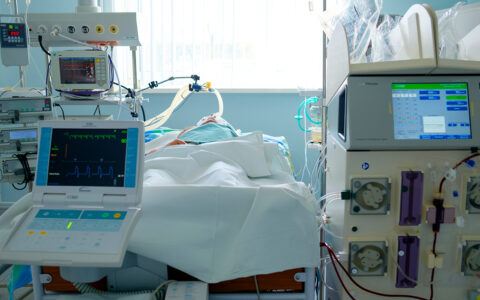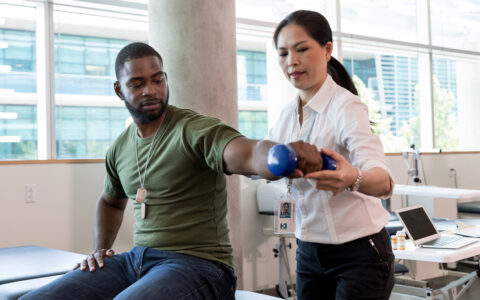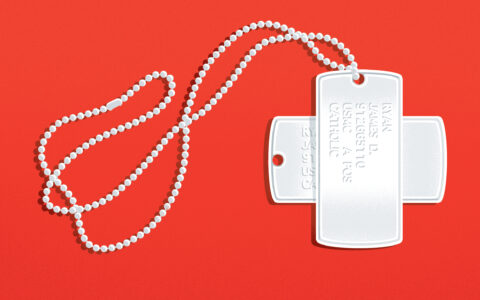Complete decongestion therapy (CDT) is the standard of care for treating patients with lymphedema. While manual positive pressure remains a primary method for moving stagnant fluids away from congested areas, graded negative pressure is becoming a valuable adjunct.
This was underscored by research demonstrating its effectiveness by Jadranko Franjic, P.T., a Vanderbilt University Medical Center lymphedema specialist. He used graded negative pressure in conjunction with manual lymphatic drainage and the short-stretch bandaging technique to treat a patient with bilateral lower extremity lymphedema.
Working with Vanderbilt colleagues Kelsey McCallops, P.T., and Paula Donahue, D.P.T., MBA, Franjic’s goal was to see if the addition of negative-pressure therapy reduced the number of treatment sessions needed to reach therapeutic goals. The team shared its case study at the American Vein and Lymphatic Society’s 36th Annual Congress.
An Insidious Crawl
Lymphedema results when non-food protein fluid chronically accumulates within the interstitial and the fibro-adipose tissue, promoting fibrotic tissue changes, discoloration and hardening of the skin. If not managed, cellulitis may follow, which may spread and cause serious problem, Franjic explained.
Applying positive manual pressure helps move fluids up to and through the lymphatic vessels, promoting decongestion of the involved extremity or area of the body. Treatments are typically given two or three times a week over a four- to eight-week period, followed by ongoing maintenance with compression garments, meticulous skin care, proper nutrition, and exercise to keep the swelling under control.
Negative Pressure
Using a LymphaTouch device, Franjic treated a 71-year-old patient with severe lower extremity lymphedema and fibrosis. Franjic had previously treated the patient with manual lymphatic drainage and compression bandaging using short-stretch bandages over 14 visits.
“This patient had bilateral leg lymphedema, likely induced by obesity, underlying vascular insufficiency and a sedentary lifestyle,” Franjic said. “We wanted to find out how the addition of graded negative pressure affected the outcome of treatments.”
“We wanted to find out how the addition of graded negative pressure affected the outcome of treatments.”
To optimize treatment, Franjic and colleagues incorporated graded negative pressure into two subsequent physical therapy periods. They applied between 150-250 mmHg, and held it for 3.5 to 4 seconds, pulling on the tissue just enough to feel the skin rise from the underlying fascia.
By incorporating graded negative pressure into complete decongestion therapy, the number of patient-visits to reach goal were about half of what was required under a typical treatment regimen.
Mechanism of Action
The variability in interstitial pressures that encourages lymphatic flow takes place by alternating contracting and expanding of tissues using positive and negative pressure, Franjic explained.
“To comprehensively reduce fibrosis, ideally tissue would be mobilized in all directions for remodeling,” he said. “This is an effect we can achieve through graded negative pressure.”
Depth matters, too, Franjic says. Benefits accrue from the ability to target deeper structures – the deep fascia and epimysium, short of inducing inflammation or pain. Manual compression therapy alone does not have that deep effect, he said.
Improve Safety, Utility
While older devices had one pressure setting and limited surface flexibility, newer devices have more adaptability, offering variable pressures from 100 to 350 mmHg. They also offer reduced noise levels and size-adjustable attachments that seal firmly to the skin. Flexible movements are now possible across bony prominences, a feature of particular benefit for foot and malleoli applications.
A European study of women with upper extremity lymphedema following mastectomy who received negative pressure therapy via LymphaTouch found decreases in the edematous volume of muscle tissue and tissue stiffness. The study notably reported a higher quality of life than had been provided through manual lymph drainage therapy.
As an added benefit, graded negative-pressure devices also decrease therapist fatigue and help their efforts become more efficient, Franjic said.
“We think that with the newer equipment, the ability to decrease the number of visits in an episode of care will lead to improved patient satisfaction over the long term,” Franjic said.




